Most people’s first impression of sheep is that they are domesticated ruminant animals typically found on farms. But did you know that there are wild sheep too?
Are there wild sheep?
Yes, wild sheep exist. Sheep are one of the earliest animals to be domesticated. So, they might appear to have been domestic animals all along. However, the domestic sheep descended from the wild sheep, which still exist today.
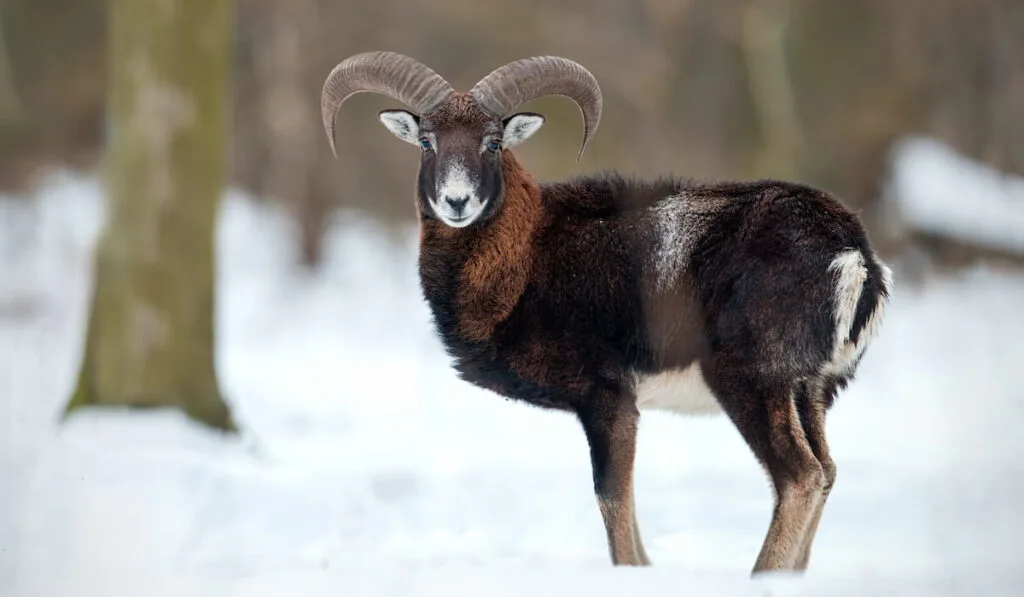
There is more to know about the existence of wild sheep. Thankfully, as this article unfolds, things get even more exciting.
Are There Wild Sheep?
There are about seven species and over ten thousand breeds of sheep in existence. But it would interest you to know that most of the breeds of sheep belong to one species – the domestic sheep.
What does this mean? Well, of the seven sheep species, six are wild sheep.
Currently, there are over 1 billion individual sheep in the world – both domestic and wild. As expected, domestic sheep make up the most of this number. But this is partly due to the effect of predation on the population of wild sheep.
Seeing that most sheep belong to the domestic sheep species, it is no surprise that many people are only aware of domestic variants. However, there are wild sheep too, and they spread across the six other species of sheep.
So, what is the difference between wild sheep and domestic sheep? Well, the most obvious difference is their environment. Wild sheep live in the wild, while domestic sheep live amongst humans.
But beyond that, wild sheep typically have coats made of both hair and wool. This combination helps them maintain warmth in cold environments.
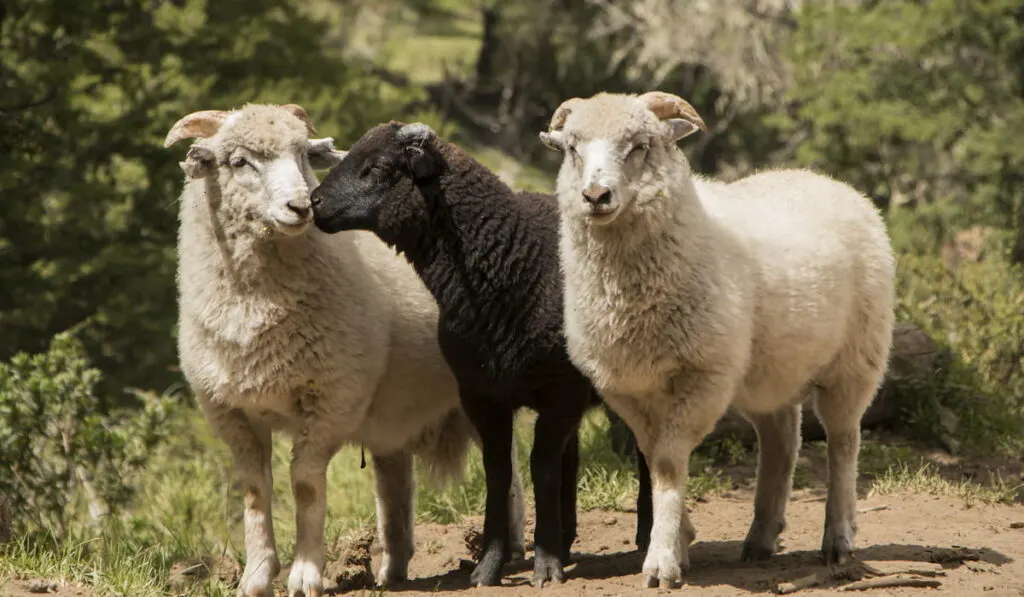
But domestic sheep have different variations of coat, depending on various factors.
Wild sheep typically have curled horns. On the horns, there are rings that indicate the age of the sheep.
Domestic sheep, on the other hand, have various types of horns and polled breeds.
Wild ewes, more times than not, birth only a single lamb. In domestic sheep, this varies. Some have one lamb, some have twins, while some average more than two lambs per birth.
Wild sheep species and domestic sheep are not all that different. For one, they are all even-toed ungulates.
All sheep species do well in elevated areas, and they thrive in extreme weather. In fact, most of them have a similar breeding season, which falls around autumn.
Wild sheep species and domestic sheep species are all ruminant animals. They also share similar flocking instincts.
Where Can You Find Wild Sheep?
Wild sheep can be found in various areas of the world. They commonly live in mountainous regions across Asia, the Middle East, North America, and Central Europe.
Generally, wild sheep can inhabit mountains as high as 4000 feet. Then there is the Urial, a species of wild sheep that can inhabit mountains as high as 19,690 feet.
The six species of wild sheep are Argali, Dall Sheep, Bighorn Sheep, Urial, Snow Sheep, and Mouflon.
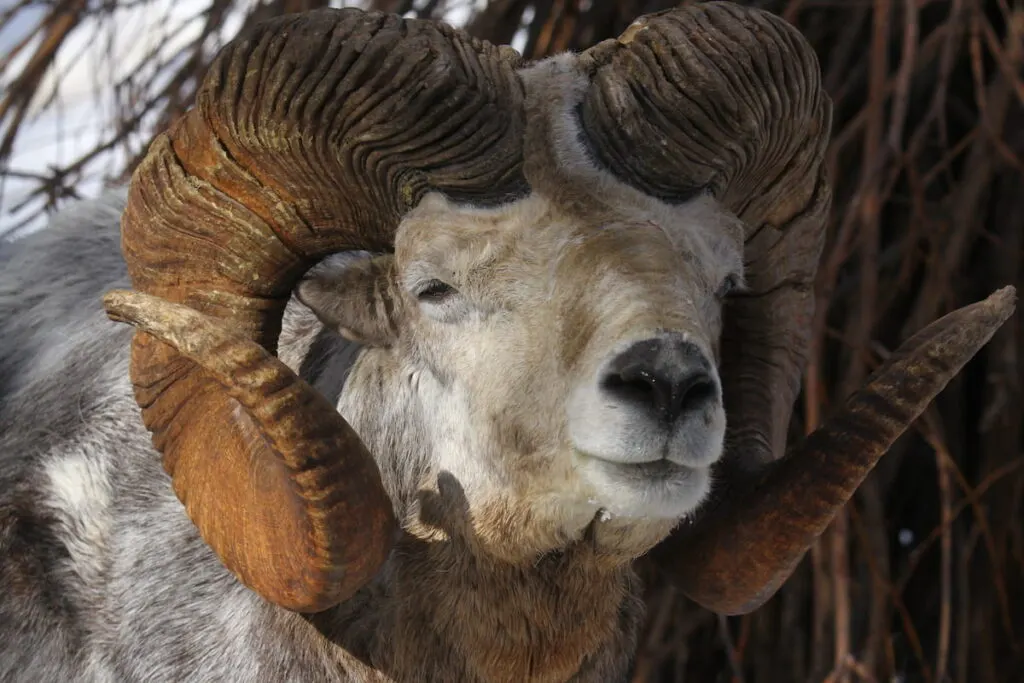
Argali
Argalis are the largest wild sheep in existence. They are native to Central Asia highlands, including the Himalayas, Altai Mountains, and Tibet.
But can be found in other parts of Asia, such as Nepal, Mongolia, Siberia, Uzbekistan, China, and Kazakhstan.
Both sexes of the Argali species are horned. The rams can weigh as much as 180-300 pounds. The ewes, however, typically weigh one-third less than the males.

Dall Sheep
Dall sheep are a species of wild sheep native to North America. They can be found in the USA and western Canada.
More specifically, Dall Sheep inhabit mountains in Alaska, the Yukon territory, and northwest British Columbia.
Both sexes of the Dall sheep are horned. However, the horns are sexually dimorphic.
While those of the ewes are slender, those of the rams are massive and curled. The rams can be as heavy as 160-249 lbs. But the ewes are lighter, weighing 101-110 lbs.
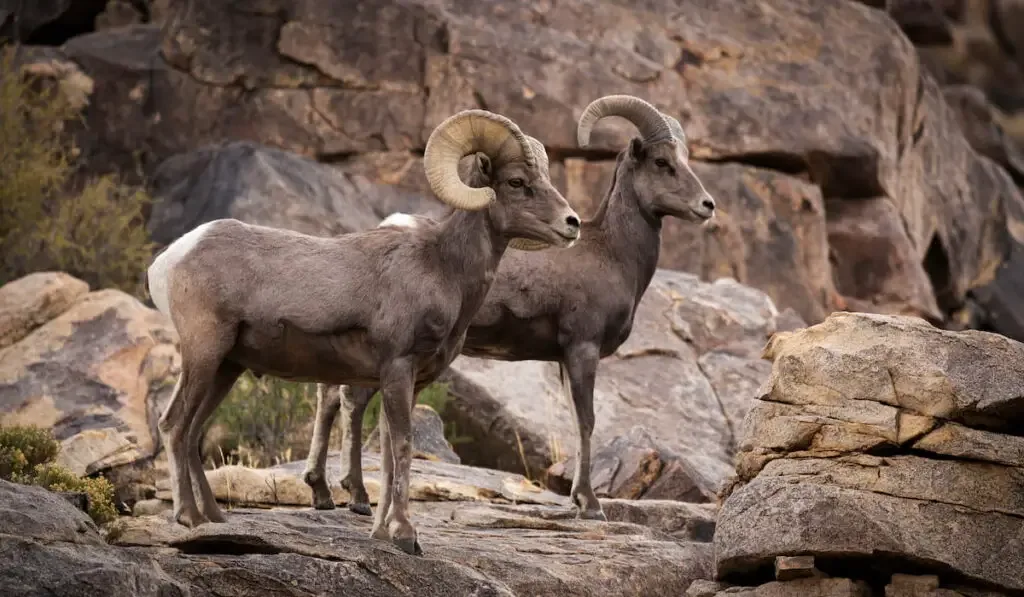
Bighorn Sheep
Like Dall sheep, Bighorn sheep are native to North America, particularly the western region. Their range spans the Canadian Rocky Mountains to deserts in the southwestern USA.
In summer and spring, Bighorn sheep stay in elevated areas. But towards the end of the fall, they move to lower elevations.
Bighorn sheep would rather live on open terrain with rocky hiding spots nearby. These spots serve as their sanctuary when predators are around.
Both rams and ewes have horns. However, those of the rams are larger. On average, the rams weigh 209 lbs. The ewes weigh an average of 156 lbs.
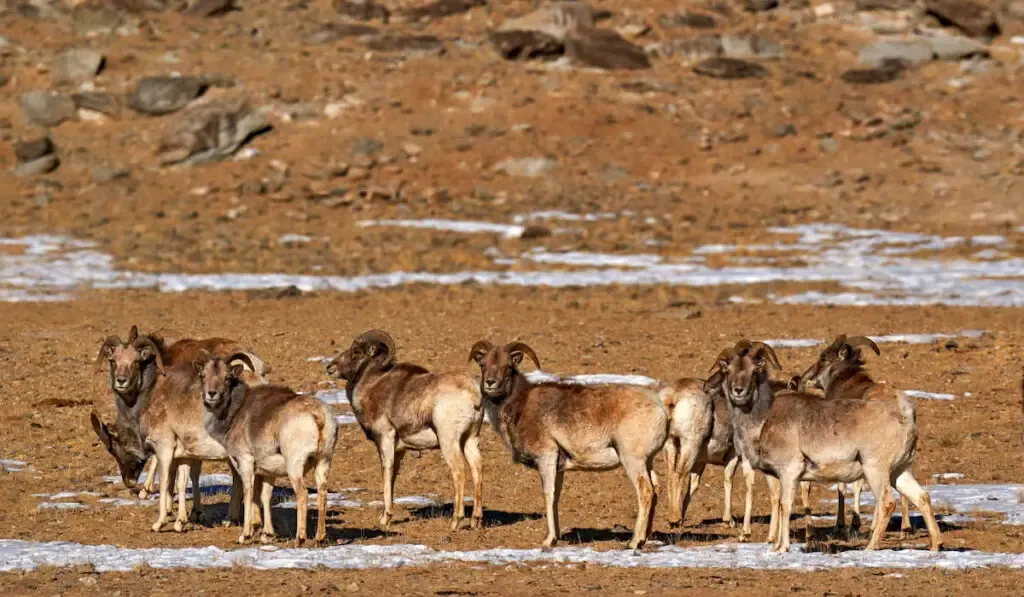
Urial
The Urial species has a unique ability to thrive at altitudes as high as 19,000 feet. It is a wild sheep native to South Asia and Central Asia.
Urial can be found in southwest Russia, northwest India, Ladakh, Afghanistan, Iran, and Pakistan. While they can live at extreme altitudes, Urials are commonly found in low elevations.
They typically live in open areas that have no trees or a few trees. However, it appears that Urials were originally woodland animals, only adapting to a changing environment.
Snow Sheep
While this species of wild sheep is closely related to the Bighorn sheep, it is native to eastern Siberia mountain regions.
Snow sheep range includes upper forest line to the limits of vegetation (around 7000 feet). Due to the intensity of winter in their environment, Snow sheep typically migrate to the southern slopes for winter.
Snow sheep rams have larger bodies and horns than the ewes. Their horns are similar to those of their relatives, the Bighorn sheep.

Mouflon
The Mouflon species is thought to be the progenitor of all domestic sheep breeds. This wild sheep species is native to the Caspian region. You can find them in Armenia, Iran, eastern Turkey, Azerbaijan, Kazakhstan, and other areas around the Caspian Sea.
Mouflon rams have horns. But the females are typically hornless – a possible sign that they were domesticated at some point. Nonetheless, you may come across some females with horns.
Are There Wild Sheep in the UK?
The Soay sheep lives in the wild in St. Kilda Archipelago, Scotland. While it is genetically a domestic sheep breed, its habitat is in the wild.
So, in many cases, it is considered a wild sheep. Besides this, you may not find any of the wild sheep species in the UK. You may, possibly, find them in a zoo or a park.
Are There Wild Sheep in Australia?
In our search, we found no evidence of wild sheep species in Australia. Of course, there is always the possibility of finding one in a park or a zoo.
Are There Wild Sheep in Scotland?
Besides the domestic sheep breed, Soay sheep, which live in the wild on St. Kilda Archipelago, there are no wild sheep species in Scotland.
Are There Wild Sheep in Ireland?
You may not find wild sheep species in Ireland. But you may come across domestic sheep that have gone feral.
Are There Wild Sheep in the US?
Yes, there are wild sheep in the US. As we mentioned before, the Dall sheep and Bighorn sheep are native to North America. Those two species of wild sheep can be found in the USA and Canada.
To be more specific, the Dall sheep can be found in Alaska, USA. The Bighorn sheep, on the other hand, can be found in mainland USA. You will find the Bighorn in places like California, Utah, Nevada, Nebraska, and Washington.
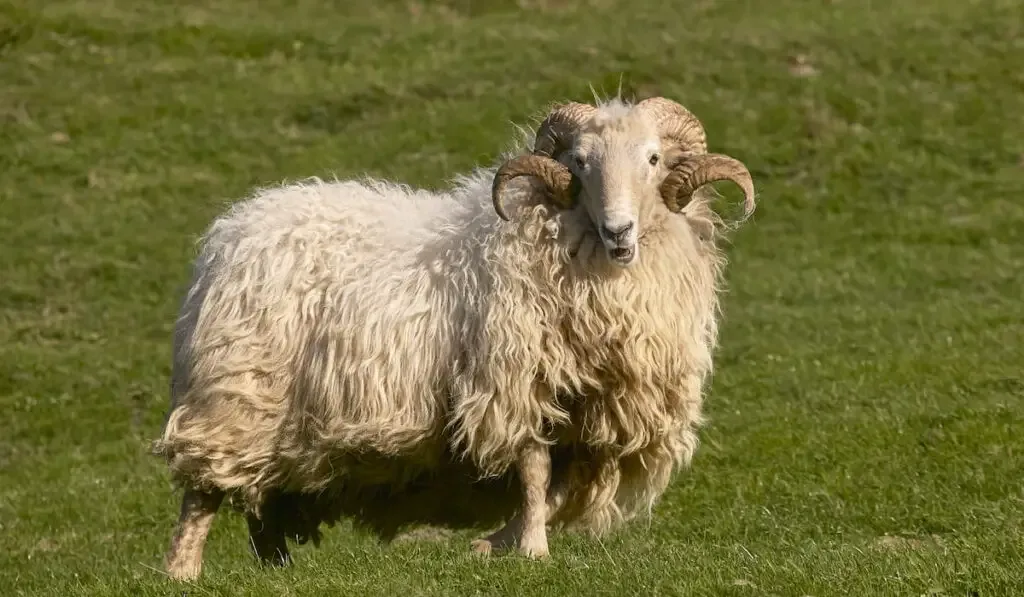
Are Wild Sheep Dangerous?
Wild sheep are not likely to attack humans. They typically try to avoid coming across humans. Nonetheless, one cannot rule out the possibility of a wild sheep displaying aggressiveness toward humans.
All in all, wild sheep typically live in mountainous areas, and they rarely come in contact with humans. So, it may be hard to accurately evaluate the dangers they pose.
How Do Wild Sheep Get Shorn? Do They Need to Be Sheared?
Wild sheep do not get shorn.
Domestic sheep have been improved over time to produce thick, dense wool. But their wild counterparts do not produce dense wool. So, instead of getting sheared, they shed their wool when it appears appropriate to their body.
Final Take
Domestic sheep might be the most common species of sheep. But there are wild sheep; in fact, they make up six of the seven species of sheep. Wild sheep can be found in various parts of the world, including North America, Europe, and Asia.
Resources
- https://www.livescience.com/52755-sheep-facts.html
- https://uknowledge.uky.edu/cgi/viewcontent.cgi?article=1151&context=anr_reports#
- https://www.goodheartanimalsanctuaries.com/animals-welfare/sheep-in-nature/
- https://www.countrysideonline.co.uk/food-and-farming/feeding-the-nation/livestock/british-lambing-season/
- https://www.britannica.com/animal/argali
- https://www.ncf-india.org/projects/status-of-tibetan-argali
- https://www.inaturalist.org/guide_taxa/1416845
- https://animaldiversity.org/accounts/Ovis_dalli/
- https://www.nationalgeographic.com/animals/mammals/facts/bighorn-sheep
- https://www.britannica.com/animal/bighorn-sheep
- https://www.britannica.com/animal/urial
- https://www.britannica.com/animal/snow-sheep
- https://www.britannica.com/animal/mouflon
- https://www.iucnredlist.org/species/54940218/22147055
- https://www.bbc.com/news/uk-scotland-highlands-islands-25638723
- https://www.shootinguk.co.uk/features/the-last-wild-sheep-in-st-kilda-636
- https://www.hillwalktours.com/walking-hiking-blog/9-facts-about-irish-sheep/#Are_there_wild_sheep_in_Ireland
- https://www.bighorninstitute.org/wild-sheep-of-north-america
- https://mynews4.com/news/around-the-web/aggressive-big-horn-sheep-attacks-utah-home-cars-golfers
- https://trib.com/outdoors/when-a-sheep-almost-attacks/article_d1ab4af1-a06a-53cd-a2cb-bd68f849a73d.html
- https://www.veganviews.org.uk/vv77/vv77wool.html
